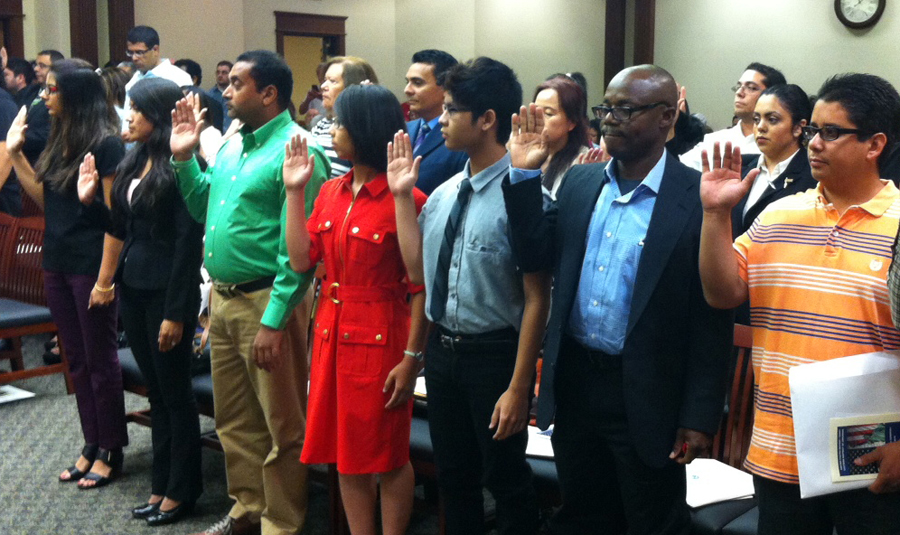
By Steve Brawner
Arkansas Sen. Tom Cotton’s proposed RAISE Act he’s co-sponsoring would limit legal immigrants. But without many more young people coming to America, how are we going to pay for Social Security and Medicare?
Cotton’s argument – and President Trump’s – is that the current laws let in the wrong people and depress wages. His RAISE (Reforming American Immigration for a Strong Economy) Act would award points based on education, English proficiency, high-paying job offers, age, achievement and entrepreneurial initiative. The current system instead gives preference to extended family members. The RAISE Act also would limit the number of refugees offered permanent residency to 50,000.
An immigrant nation
Focusing on the world’s best and brightest kind of flies in the face of Emma Lazarus’ poem at the base of the Statue of Liberty. (“Give me your tired, your poor, your huddled masses yearning to breathe free. … I lift my lamp beside the golden door!”) That poem’s “wretched refuse” traveled across the ocean with nothing and then built America. As the Washington Post’s Philip Bump pointed out, Trump’s immigrant grandfather, Friedrich Trumpf, likely would not have qualified for entry under the RAISE Act.
But it’s the 21st century, and the United States has every right to at least reconsider its immigration policies. Canada and Australia, two other immigrant destinations, have skills-based systems.
The RAISE Act would limit immigration significantly – by 41 percent the first year, according to a study cited by Cotton’s office, and by 50 percent by year 10. Unfortunately, having fewer immigrants, rather than more, would make it more difficult to solve Social Security’s and Medicare’s funding challenges.
Created in 1935 (Social Security) and 1965 (Medicare), the two programs are entrenched in American life. They enjoy broad support, even among those who say the government can’t do anything right.
The demographic numbers don’t lie
Unfortunately, they face a demographic reality: Americans are living longer and having fewer children than previous generations. That means there’s a lot of people receiving benefits for a long time, but not enough people paying for them. In 1945 there were 42 covered workers for each Social Security beneficiary, and that ratio was still 5:1 in 1960. Now, it’s 3:1, with the number of workers expected to shrink further.
More workers are needed now and in the future. Unfortunately, Americans are not young enough to produce them. According to the Census Bureau, the median age of American females in 2010 was 38.5 years – about when women stop having children. Fifty-four percent of American women that year were at least age 35.
In other words, we have a lot of older people and not enough capacity to make new ones, unless many more Americans follow Jim Bob and Michelle Duggar’s example and have 19 children. (Or my grandmother’s and have an 11th child, my mom, at age 47) Because we can’t produce enough young workers to pay for Social Security and Medicare, we’re going to have to import them.
To its credit, the RAISE Act awards more points to younger applicants, along with higher wage earners who would pay more into the system. But one of its supposed selling points is that it allows fewer immigrants, when instead we must have more of them.
Importing young workers is not the only solution for Social Security’s and Medicare’s funding issues. However, the others include cutting benefits and raising taxes, and the American people won’t let elected officials do that. So for all the talk about building walls, we’ll eventually not only lift our lamp beside the golden door, but we’ll be holding it open and looking for young workers to walk through it.
Related: Welcome to your country.
© 2017 by Steve Brawner Communications, Inc.
Immigrants have always been our strength. The views of Trump, Cotton, and their allies are misguided.
I can see where he’s coming from by focusing on skilled immigrants. But “low-skilled” immigrants are badly needed, and some of them become highly skilled ones.